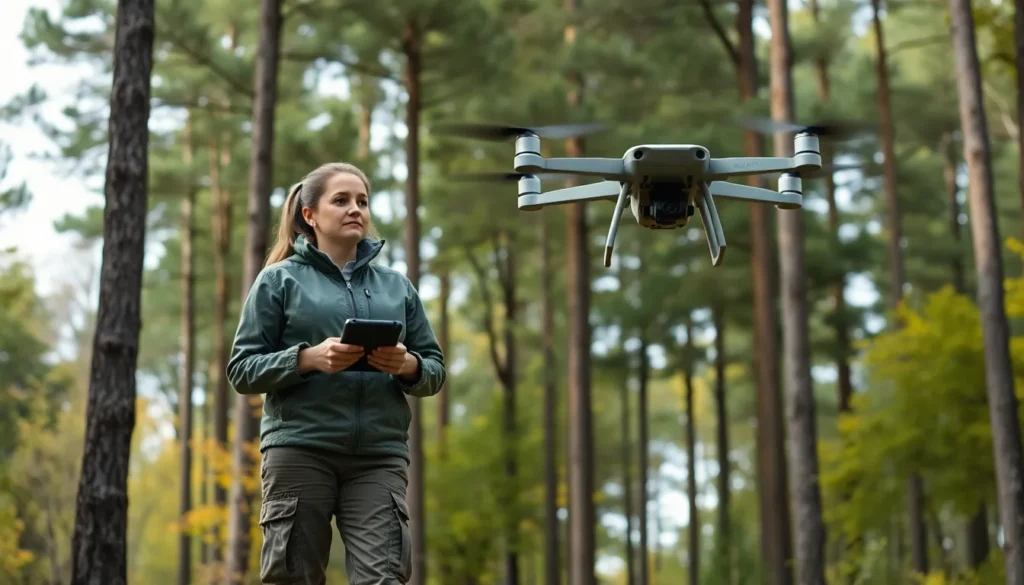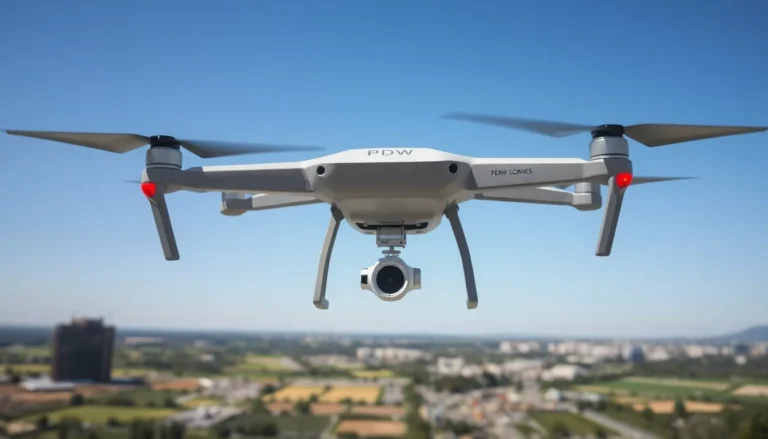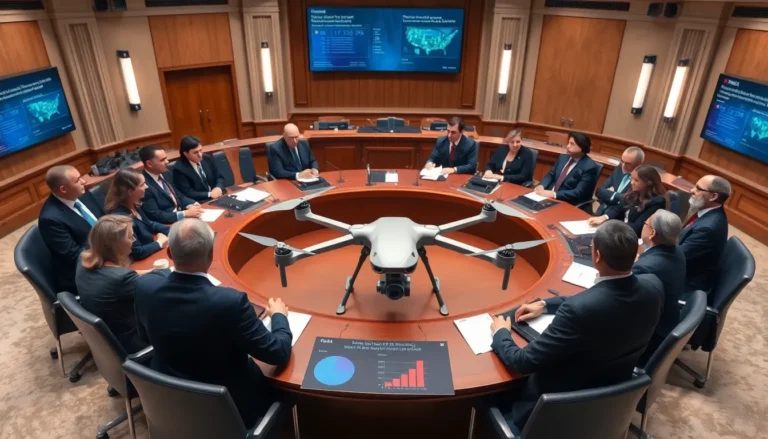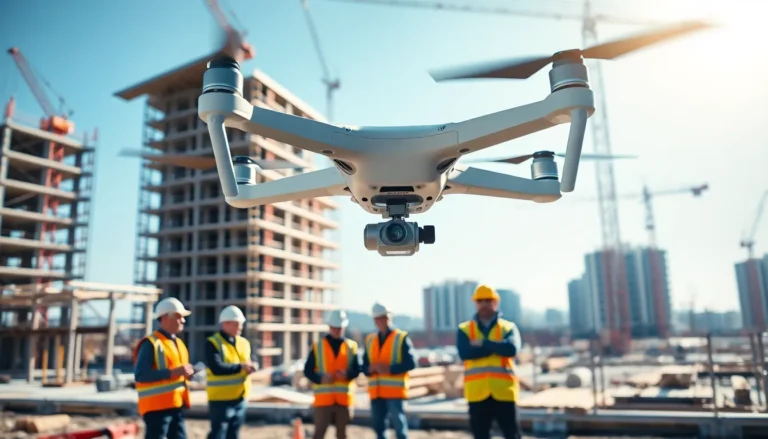Imagine a world where drones don’t just zip around taking pictures but also have ears to listen. Enter drones with acoustic sensors, the high-tech marvels that are changing how we gather information. These flying gadgets can eavesdrop on nature, track wildlife, and even monitor urban noise levels—all while looking cool in the sky.
Table of Contents
ToggleOverview of Drones with Acoustic Sensors
Drones with acoustic sensors significantly enhance real-time monitoring capabilities. These devices utilize sound waves to capture data about their environment effectively. Wildlife researchers frequently deploy these drones to monitor animal populations and behaviors, providing insights without disturbing natural habitats. Urban planners benefit from this technology by assessing ambient noise levels, leading to better urban design.
Advanced algorithms process audio data captured by these drones, facilitating the identification of specific sounds. They can differentiate between natural sounds, such as bird calls, and human-made noises, such as traffic. This capability helps researchers understand soundscapes in diverse ecosystems, promoting conservation efforts.
Data collected by drones with acoustic sensors contributes to various applications. Environmental studies leverage this data for assessing ecosystem health. In disaster response, acoustic analysis enables teams to locate individuals in need of assistance based on sound identification.
Significant advancements in drone technology improve both range and sensitivity of acoustic sensors. Enhanced battery life allows for longer flight times, expanding data collection opportunities. Compact designs make it easier to maneuver drones in challenging environments, such as dense forests or urban areas.
Drones equipped with these sensors also face challenges. Interference from other sounds can complicate data interpretation. Training algorithms to recognize specific audio patterns requires substantial data and time. Despite these hurdles, the potential for innovation in environmental monitoring continues to grow, showcasing the future of drones in diverse fields.
Applications of Acoustic Sensors in Drones
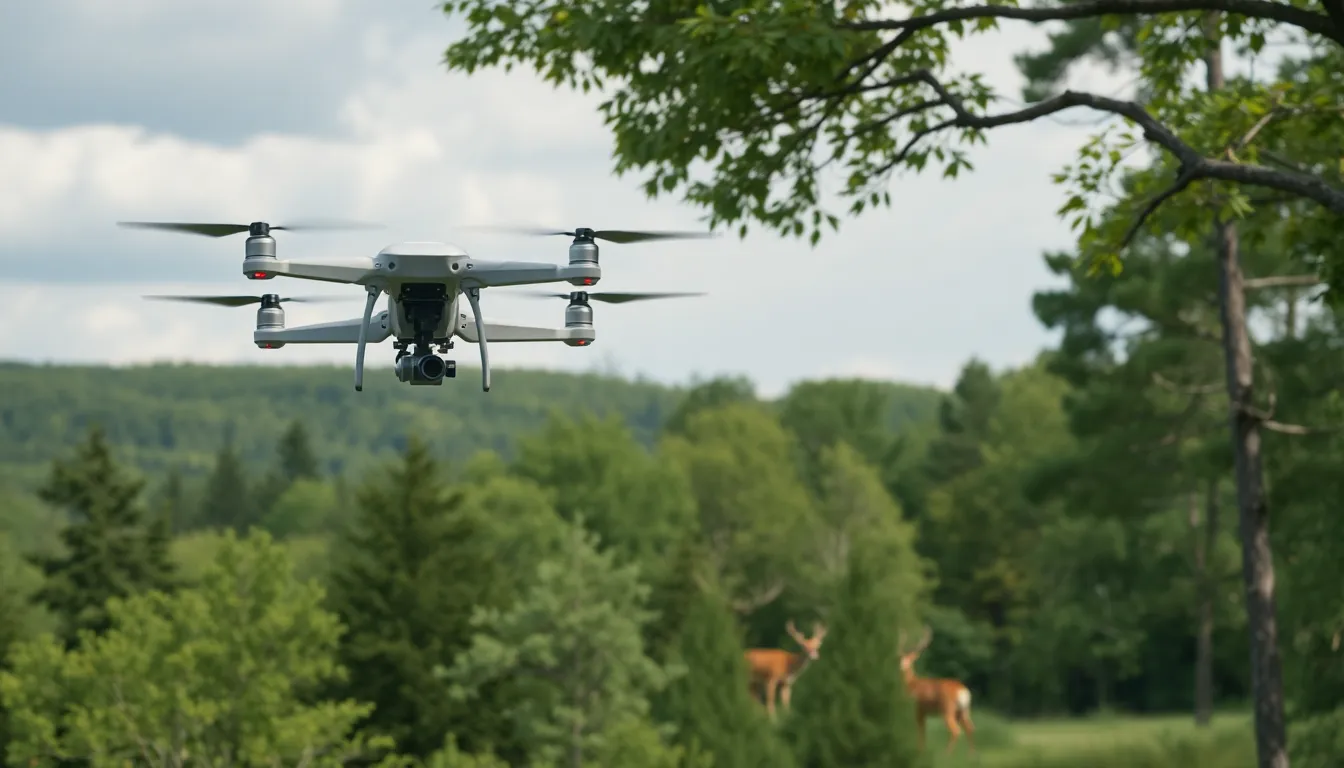
Acoustic sensors in drones play a crucial role in various fields, enhancing data collection and monitoring capabilities. These applications span environmental monitoring, wildlife conservation, and search and rescue operations.
Environmental Monitoring
Environmental monitoring benefits significantly from drones equipped with acoustic sensors. These devices capture soundscapes to assess ecosystem health, identifying changes in environments. Researchers often analyze data to understand changes in weather patterns, pollution levels, and noise contamination. Drones provide a non-invasive method to gather audio data, allowing scientists to monitor remote areas without disturbances. Utilizing advanced algorithms, acoustic data is processed to identify trends over time, making it easier to develop conservation strategies based on empirical evidence.
Wildlife Conservation
Wildlife conservation relies on drones with acoustic sensors to monitor animal activity quietly. These drones detect specific sounds, such as animal calls, aiding researchers in tracking populations and behaviors. By minimizing disturbances, scientists gather reliable data for conservation efforts. Acoustic monitoring also helps identify threats, such as illegal poaching or habitat destruction, by capturing evidence of unusual sounds. Various ecosystems benefit as researchers gain insights into species interactions and habitat usage through non-invasive observation methods.
Search and Rescue Operations
Search and rescue operations see substantial improvements with the deployment of drones equipped with acoustic sensors. In emergency situations, these drones can detect human voices or sounds, which assists in locating missing persons quickly. Acoustic sensors provide real-time feedback, allowing search teams to pinpoint areas where individuals may need assistance. Enhanced sensitivity enables drones to navigate challenging terrains and reach remote locations. The combination of aerial surveillance and sound detection amplifies response times during critical incidents, increasing the chances of successful rescue missions.
Advantages of Using Acoustic Sensors
Drones equipped with acoustic sensors provide numerous benefits across various fields. Their unique ability to interact with the environment through sound waves allows for advanced monitoring and analysis.
Enhanced Detection Capabilities
Enhanced detection capabilities distinguish drones with acoustic sensors from traditional models. These drones can identify specific sounds, such as animal calls or distress signals, that often go unnoticed by human observers. Researchers and conservationists utilize this feature to analyze animal behaviors and monitor populations. Acoustic sensors also excel in detecting subtle changes in soundscapes, which can signal shifts in ecosystem health or identify potential threats like poaching. By pinpointing exact audio patterns, these drones facilitate more informed decision-making and proactive measures.
Real-Time Data Collection
Real-time data collection serves as a significant advantage provided by drones with acoustic sensors. Immediate audio feedback enables researchers to respond promptly to environmental changes or wildlife activities. Urban planners benefit from direct assessments of noise pollution levels, leading to informed urban design strategies. When deployed in search and rescue missions, these drones can instantly detect human voices, increasing the chances of locating missing persons swiftly. Overall, the capability of these drones to collect and analyze sound data in real time fosters timely interventions across diverse applications.
Challenges and Limitations
Drones equipped with acoustic sensors face several challenges and limitations that can impact their effectiveness.
Technical Limitations
Many drones encounter technical limitations related to sensor performance. Variable sound quality affects data accuracy; ambient noise can mask critical sounds. Distinguishing between various audio signals often proves complex, requiring sophisticated algorithms. Battery life represents another constraint, as extended flight times are necessary for comprehensive monitoring. Additionally, adverse weather conditions can hinder sensor function and data collection reliability. These factors lead to challenges that can reduce the effectiveness of sound data gathering and interpretation.
Regulatory Issues
Regulatory issues pose significant challenges for the deployment of drones with acoustic sensors. Different regions have various laws regarding drone flight, which can restrict operational capabilities. Privacy concerns also arise, especially when drones monitor urban areas. Compliance with local regulations often entails obtaining special permissions, which can delay project timelines. Furthermore, regulations regarding data collection and usage vary, necessitating careful navigation to avoid legal complications. Adhering to these laws while maximizing drone functionality can create a delicate balance for operators.
Future Trends in Acoustic Sensor Technology
Innovations in acoustic sensor technology for drones are advancing rapidly. Enhanced sensitivity allows for capturing an even wider range of sounds, making remote monitoring more effective. Algorithms will improve, enabling more accurate identification of specific audio patterns in diverse environments. Increasingly, these technologies integrate artificial intelligence, streamlining data analysis and enhancing decision-making processes.
The demand for real-time data continues to rise across various sectors, further driving the development of these sensors. Integration with other sensor types, such as thermal or visual, could create multisensory platforms for comprehensive environmental assessments. Researchers anticipate greater adaptability of drones, allowing them to operate in various weather conditions without significant data loss or quality degradation.
Commercial applications are expanding, with potential uses in industries such as agriculture and infrastructure monitoring. In agriculture, drones may detect pests or plant health issues through sound analysis, allowing for timely interventions. Infrastructure monitoring will benefit from acoustic sensors that identify vibrations and sounds indicative of structural weaknesses.
As privacy concerns grow, regulatory frameworks will likely evolve to address the use of drones equipped with acoustic technology. Collaboration among industry stakeholders and policymakers will become crucial in establishing guidelines that promote safe and responsible usage. Additionally, educational initiatives focusing on technological trends will help inform users about compliance and best practices.
Advancements in acoustic sensor technology for drones promise to revolutionize various fields. Focused research and innovation will expand operational capabilities, improve data quality, and enhance utility in real-world applications. The future holds great potential for these technologies, as they adapt to meet the needs of researchers, conservationists, and industry professionals alike.
Drones with acoustic sensors are paving the way for innovative monitoring solutions across various fields. Their ability to capture sound data in real time enhances research and conservation efforts while improving urban planning strategies.
Despite facing challenges like data interpretation and regulatory hurdles, advancements in technology promise to overcome these obstacles. The integration of artificial intelligence and multisensory capabilities is set to further elevate their effectiveness.
As these drones continue to evolve, their impact on environmental monitoring, wildlife conservation, and emergency response will grow, making them invaluable tools for understanding and protecting our world.

